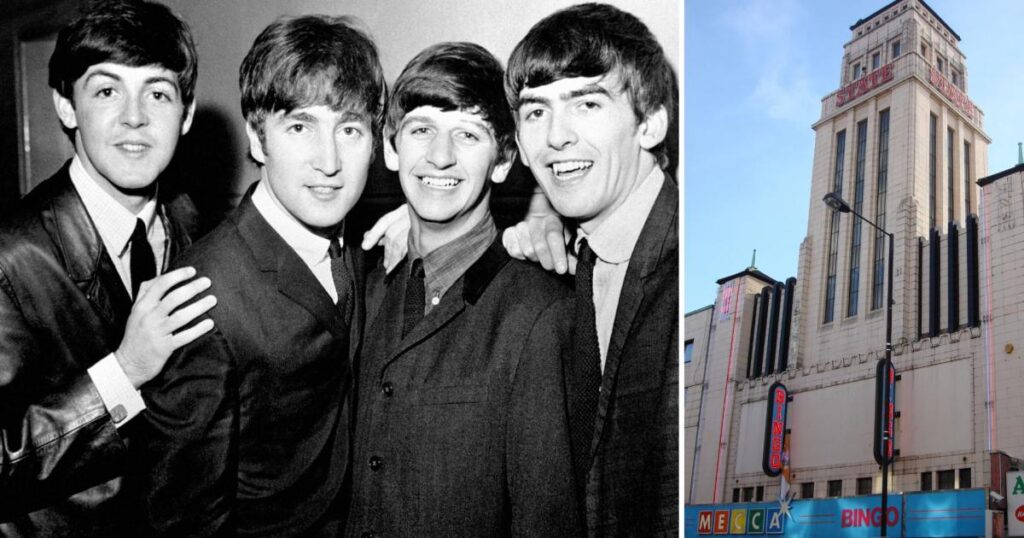When it opened in 1937, the palatial venue was one of the largest cinemas in Europe – its 130ft tower, modelled on the Empire State Building, lit up as a beacon across north west London.
The tower boasted a radio studio for broadcasting concerts from the 4,000-seat Super Cinema, which was Art Deco on the outside and Italian Renaissance inside.
The Gaumont State Theatre started as a 4,000 seat Super Cinema and live performance venue but in recent years has been a bingo hall and church.(Image: Wikimedia)
There was standing room for another 4,000, an Italian marble double staircase, chandeliers copied from the ballroom at Buckingham Palace, and a Wurlitzer organ that rose from the depths and revolved to face the audience.
Named after the Gaumont British Picture Corporation, the theatre required gentlemen in the 7.5p seats to wear a bow tie, while the 4p patrons used a side entrance in Willesden Lane.
The grand opening saw performances by Gracie Fields, Larry Adler, and George Formby – and over the next four decades the Gaumont State hosted circus, ballet, and a who’s who of global music stars including Frank Sinatra, Ella Fitzgerald, Buddy Holly, David Bowie, The Rolling Stones, and in 1963 and 1964, The Beatles.

In May 1958 it witnessed a humiliating scene for Great Balls of Fire singer Jerry Lee Lewis. On the second night of his UK tour, headlines revealed he had married his 13-year-old cousin Myra. Some in the audiences shouted ‘Go home cradle snatcher’, prompting Lewis to stop the show, walk off, and abandon the tour.
In the 1960s the Grade II*-listed gem became a ballroom and cinema, then a hybrid cinema and bingo hall.
The Who recorded a live concert there in 1977 and one of the last big gigs was in December 1978 when Ian Dury & The Blockheads performed there.

Thereafter – apart from the odd organ recital on the original Wurlitzer which is still in situ – the live music ended – apart from a brief interlude in 1981 when it stood in for the Austrian capital in the video for Ultravox’s Vienna.
From 1990 it was a bingo hall before being sold in 2007 to Ruach City Church.
The concert on November 6 will mark a return of live music as the opening night of the this year’s Kilburn Music Mile festival.
A post shared by Kilburn Music Mile Festival (@kilburnmusicmilefestival)
The celebration of music, culture and community takes place in an area with a rich musical heritage. Fifty years ago its assembly of pubs dance halls, Irish and country music venues earned it the nickname the Music Mile.
And once gain the pubs of Kilburn will be packed with live music, including The North London Tavern, Black Lion, and Sir Colin Campbell.
Palmerston Road will be closed on November 8 for a day of free live music performances, and the festival will also include Street art, Film, wellbeing workshops, children’s activities, heritage walks and open mic sessions.
Tickets for The Royal Philharmonic Orchestra at The Gaumont State on November 6 are available via www.eventbrite.co.uk




